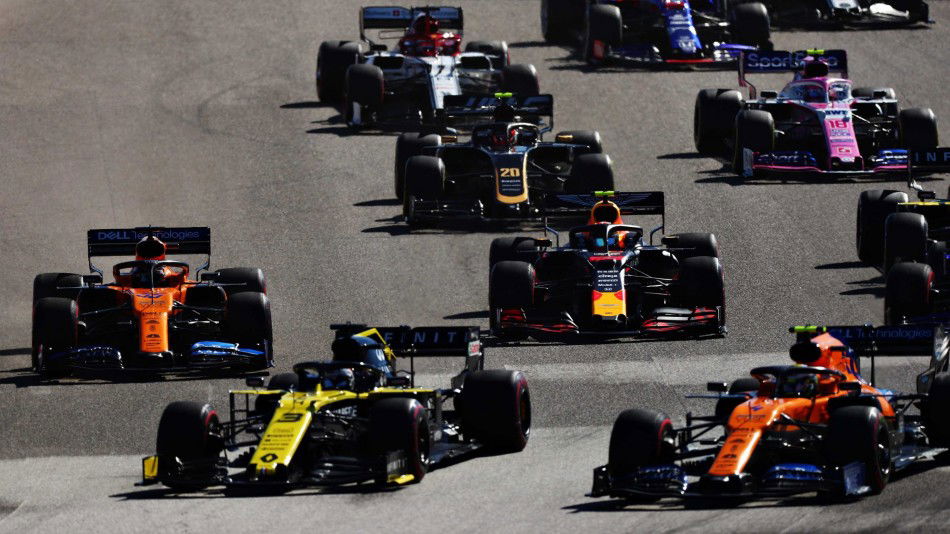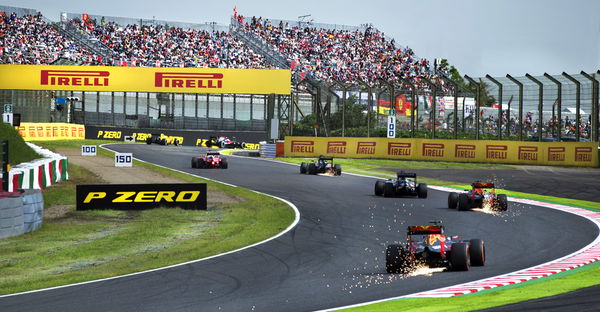

As more and more emphasis is placed on saving the environment, Formula One is trying to do its part. In fact, the sport has recently formulated a plan to become carbon neutral by 2030.
Watch What’s Trending Now!
The idea is to erase the sport’s carbon footprint at race tracks, which includes road and air transport of staff and equipment to the events.
Apparently, there is a need to move to “ultra-efficient logistics and travel and 100% renewably powered offices, facilities and factories.”
ADVERTISEMENT
Article continues below this ad
According to Formula One, the first step will be to begin carbon-reduction projects with immediate effect. All events will be made “sustainable” by 2025, including eliminating single-use plastics and ensuring all waste is reused, recycled or composted.
In 2021, rules will demand that the petrol used in F1 has a biofuel content of at least 10%.
ADVERTISEMENT
Article continues below this ad
F1's current annual carbon footprint is 256,551 Tonnes of C02. 45% of that is logistics. 27.7% business travel. Just 0.7% of that is PU emissions (ie, on-track action). #F1
— Phillip Horton (@PHortonF1) November 12, 2019
It is note-worthy that the high-tech turbo hybrid power-units currently employed by F1 cars since 2014 are the most efficient in the world. This is especially in terms of percentage of fuel energy that is converted into power, known as thermal efficiency.
F1 engines have a thermal efficiency rating of 50%, whereas a road-car petrol engine is generally in the region of 30%.
The current engines are in line to continue until the end of 2025, and F1 is to look at ways of ensuring that whatever specification of engine is used from 2026 takes another step forward in efficiency.
ADVERTISEMENT
Article continues below this ad
The sport’s owners added that they hoped to work with the automotive industry to apply the lessons of F1’s engines to create “the world’s first net-zero carbon hybrid internal combustion engine”.
In-depth conversations with road-car manufacturers on this area have not yet begun but they will focus on the development of synthetic fuels, which use carbon captured from the air, farm waste or biomass.
F1 says it has come up with its plan to have a net-zero carbon footprint “after 12 months of intense work with motorsport’s governing body the FIA, sustainability experts, F1 teams, promoters and partners”.
Instigating the plans will require the assistance of the teams, some of whom employ more than 1,000 people to design, develop, build and race the cars that take part in more than 20 grands prix a year.

F1 says all have signed up to the project. And some have already started working towards this goal.
World champions Mercedes, for example, say they have been powering their two F1 factories in the UK entirely by renewable energy since early October and that they are on target to have net-zero carbon emissions by the end of next year through a combination of reducing CO2 emissions and offsetting.
Chase Carey, the chairman and chief executive of Formula One, said: “Over its 70-year history, F1 has pioneered numerous technologies and innovations that have positively contributed to society and helped to combat carbon emissions.
“From ground-breaking aerodynamics to improved brake designs, the progress led by F1 teams has benefited hundreds of millions of cars on the road today.
“Few people know that the current F1 hybrid power unit is the most efficient in the world, delivering more power using less fuel, and hence CO2, than any other car.
“We believe F1 can continue to be a leader for the auto industry and work with the energy and automotive sector to deliver the world’s first net-zero carbon hybrid internal combustion engine that hugely reduces carbon emissions around the world.”
FIA president Jean Todt affirmed that his organisation and F1 were “committed to driving development and ensuring motorsport grows as a laboratory for environmentally beneficial innovations”.
F1 plans to offset emissions through a combination of replanting trees and using the engineering knowhow in the sport to develop new technologies that can capture carbon from the atmosphere.

ADVERTISEMENT
ADVERTISEMENT
ADVERTISEMENT
ADVERTISEMENT

